 Dreaman,co,ltd.
Dreaman,co,ltd.Nowadays, with the internet making it easy to access any amount of information and individual travel becoming the norm, the reasons why foreign tourists visit Japan are so numerous that it would be impossible to list them all.
What “things” and “events” in Japan are they interested in? We will introduce 20 reasons why foreign tourists travel to Japan, from major reasons to more obscure ones, and what attracts them to come to Japan.
- 1. Japanese Food Culture
- 2. Nature, scenic spots, and spectacular views
- 3. Beautiful cherry blossoms and flower viewing
- 4. Mount Fuji
- 5. Good public safety
- 6. Cleanliness of the country
- 7. Shopping
- 8. Shrines, Temples and Japanese Gardens
- 9. Hot Springs & Public Baths
- 10. Unique Japanese Accommodations
- 11. Japanese traditional culture, performing arts and crafts
- 12. Festivals & Seasonal Events
- 13. Outdoor sports and thrilling experiences
- 14. Sumo and watching sports
- 15. Anime, Manga & Pilgrimages
- 16. Theme parks, entertainment spots, and cafes
- 17. World Heritage Sites and Places with a Historical Feel
- 18. City Walking, Architecture Walking
- 19.Railroad & Transportation Network
- 20. We Japanese
- 1. Japanese Food Culture
- 2. Nature, scenic spots, and spectacular views
- 3. Beautiful cherry blossoms and flower viewing
- 4. Mount Fuji
- 5. Good public safety
- 6. Cleanliness of the country
- 7. Shopping
- 8. Shrines, Temples and Japanese Gardens
- 9. Hot Springs & Public Baths
- 10. Unique Japanese Accommodations
- 11. Japanese traditional culture, performing arts and crafts
- 12. Festivals & Seasonal Events
- 13. Outdoor sports and thrilling experiences
- 14. Sumo and watching sports
- 15. Anime, Manga & Pilgrimages
- 16. Theme parks, entertainment spots, and cafes
- 17. World Heritage Sites and Places with a Historical Feel
- 18. City Walking, Architecture Walking
- 19.Railroad & Transportation Network
- 20. We Japanese
- 共有:
- いいね:
1. Japanese Food Culture
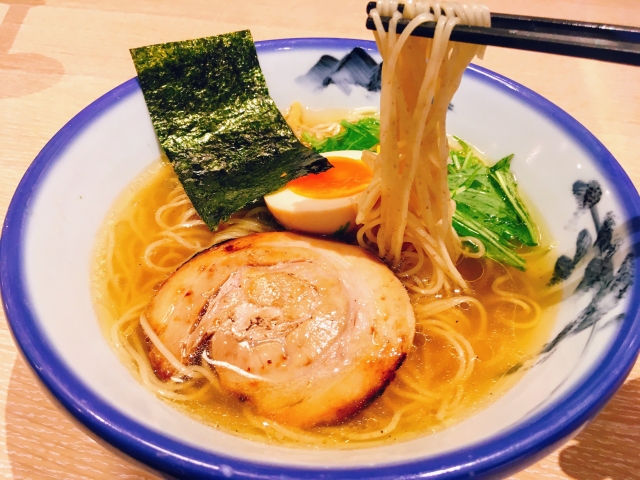
Since Japanese cuisine was registered as an Intangible Cultural Heritage by UNESCO in 2013, Japanese cuisine has become popular worldwide, and Japanese restaurants are now rapidly increasing all over the world. The overwhelming majority of foreign tourists visit Japan for the food.
There is no end to the things that interest me: sushi, ramen, yakiniku, tempura, tonkatsu, yakitori, and of course izakaya cuisine, inn breakfast, takoyaki, curry, convenience store rice balls, Japanese sweets, and more.
Tokyo in particular seems to be an attractive city for gourmet travelers, as you can enjoy not only Japanese food but also cuisine from around the world, and it has the most Michelin-starred restaurants in the world.
Furthermore, Japanese whiskey and beer have a reputation for being delicious overseas, and interest in sake and wine is also growing. The number of foreigners visiting sake breweries and wineries is also increasing.
2. Nature, scenic spots, and spectacular views
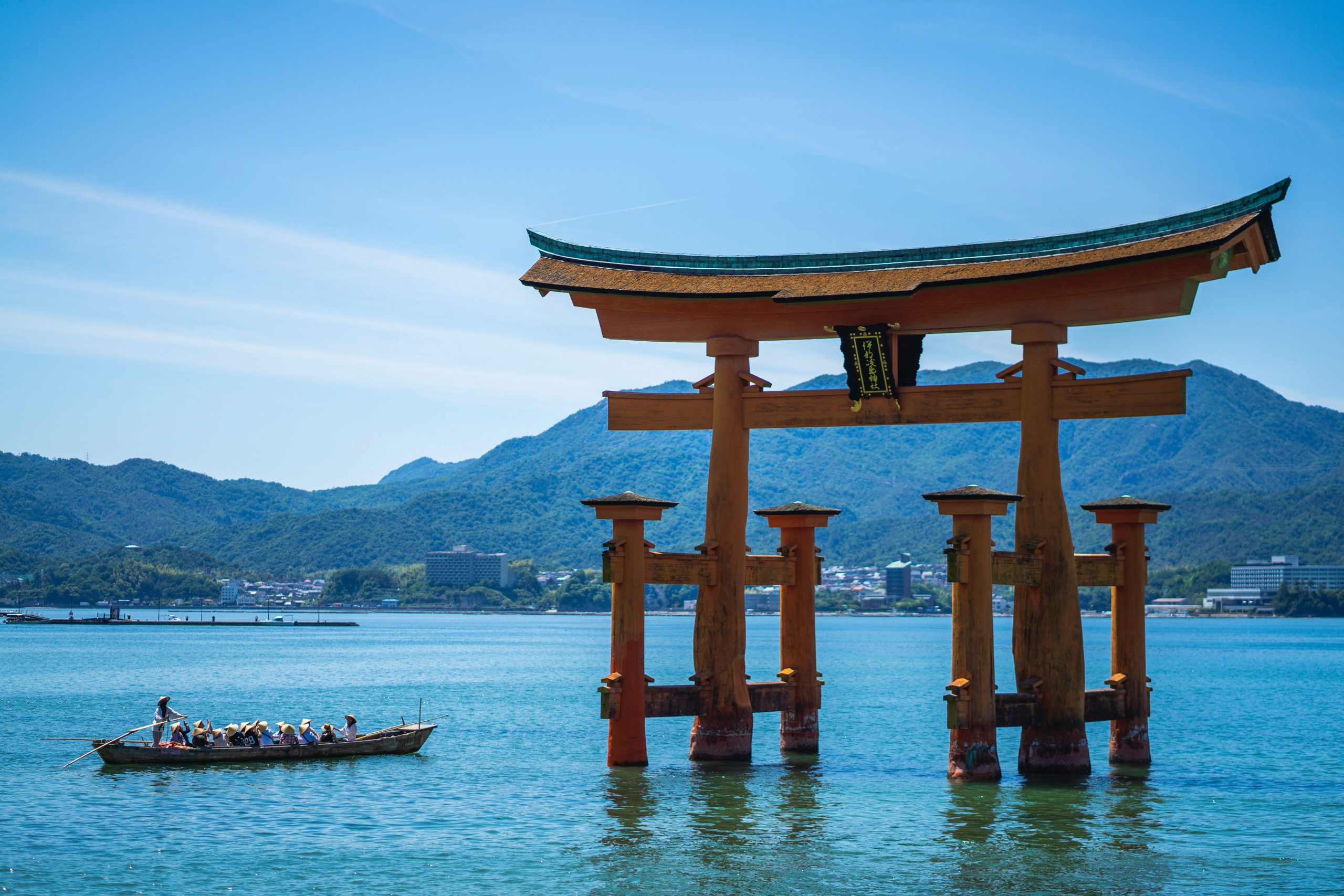
Surrounded by the sea on all sides and with mountains making up about 73% of the land area, the long, vertical Japanese archipelago is a treasure trove of rich and varied nature. From cherry blossoms in spring to fresh greenery, autumn leaves, and snowy winter scenery, the natural scenery that changes with the seasons is so beautiful that you can’t help but feel glad to be born as a Japanese person.
It seems that many foreign tourists are also fascinated by the natural beauty of Japan.
In particular, many foreign tourists visit scenic spots introduced on overseas travel sites, such as Itsukushima Shrine in Hiroshima, Arakurayama Sengen Park in Yamanashi, Hitachi Seaside Park with its beautiful nemophila flowers, Kawachi Fuji Garden in Fukuoka, the bamboo forest in Arashiyama, Kyoto, Jigokudani Monkey Park in Nagano, and Ishigaki Island.
3. Beautiful cherry blossoms and flower viewing
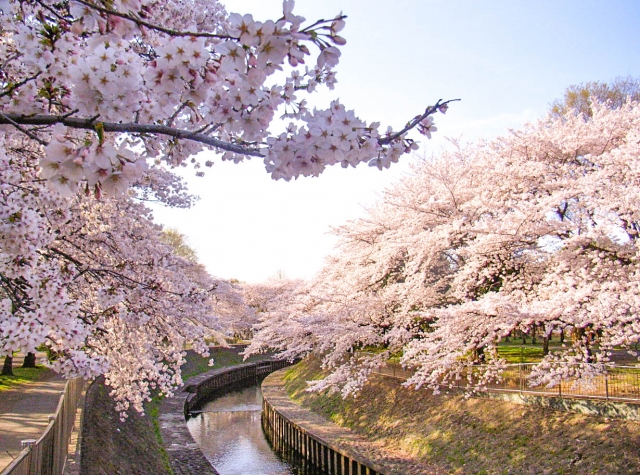
The beauty of Japanese cherry blossoms attracts people from all over the world, and the cherry blossom season sees the largest number of foreign tourists visiting Japan each year.
Also, in many countries overseas, drinking alcohol is prohibited in public places such as parks, so until recently, many people found it strange to see Japanese people eating bento and drinking alcohol under cherry blossoms in full bloom. In recent years, the number of foreigners coming to Japan to enjoy “hanami” has been increasing.
4. Mount Fuji
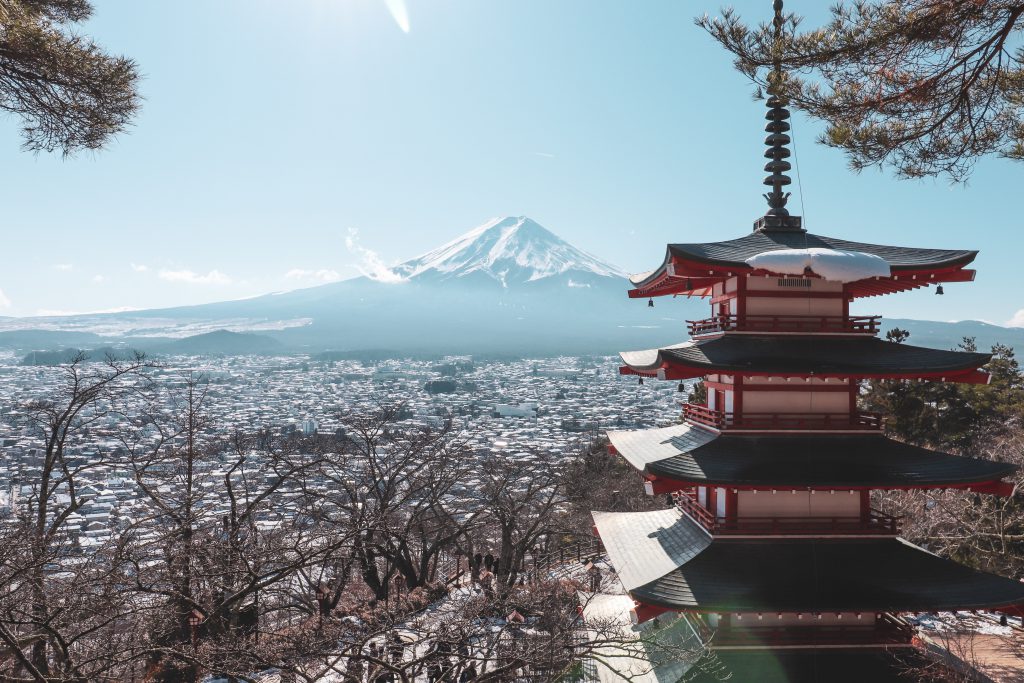
Since Mount Fuji was registered as a World Heritage Site in 2013, many foreign tourists have come to visit the mountain. People all over the world are moved by the beauty and sacredness of Mount Fuji.
As mentioned above, the view of Mt. Fuji from Arakurayama Sengen Park is very famous overseas. The combination of Mt. Fuji, the vermilion tower, and cherry blossoms in full bloom is what makes foreigners think “this is Japan!”, and many foreign tourists flock to see the magnificent view.
Additionally, Mount Fuji is easily accessible, has well-maintained hiking trails, and is easy to reach the summit, so many people climb the mountain to see the sunrise from the summit.
5. Good public safety
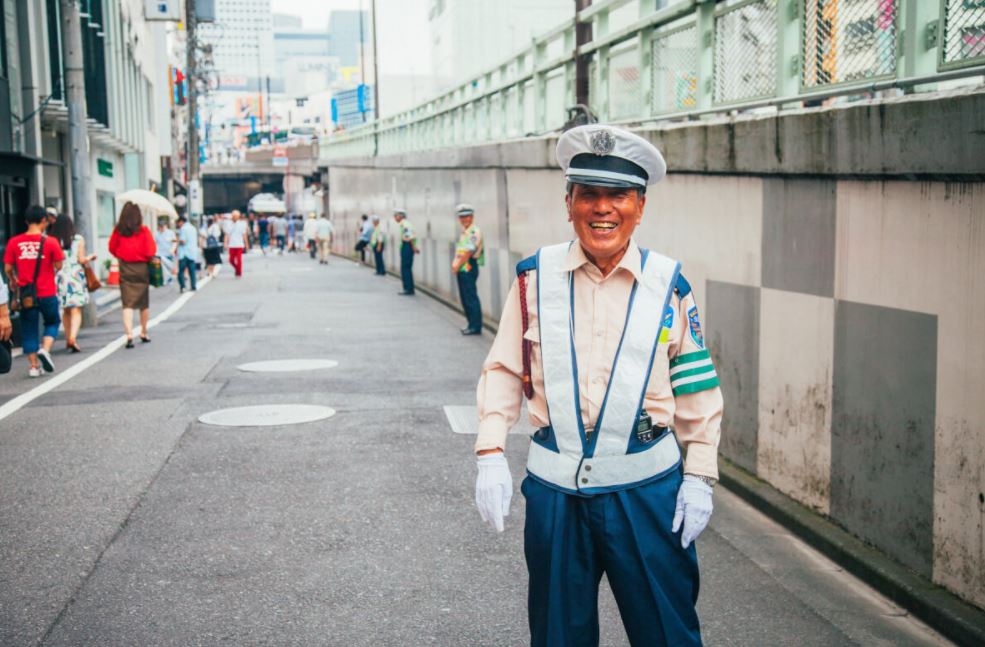
Japan has one of the best public safety rankings in the world. Drunk salarymen sleeping on trains or at stations, or children riding the subway alone are often shocking sights for foreigners.
Even in a big city like Tokyo, there is almost no need to worry about pickpockets or baggage snatchers. Not only are there high chances of lost or forgotten items being returned, but even women can go out alone at night. The ability to travel safely without feeling in danger is one of the main reasons why foreign tourists choose Japan as a travel destination.
6. Cleanliness of the country

Japan has a reputation overseas for being a very clean country.
Many people are impressed by the beautiful city with no trash on the ground, and by the clean, comfortable toilets that are available everywhere and free to use. Many foreign tourists seem to find it strange that, even though there is no trash on the ground, there are hardly any trash cans on the roads or in public places.
As a licensed guide-interpreter/interpreter, I would like to be able to explain why there are so few trash cans in Japan.
7. Shopping
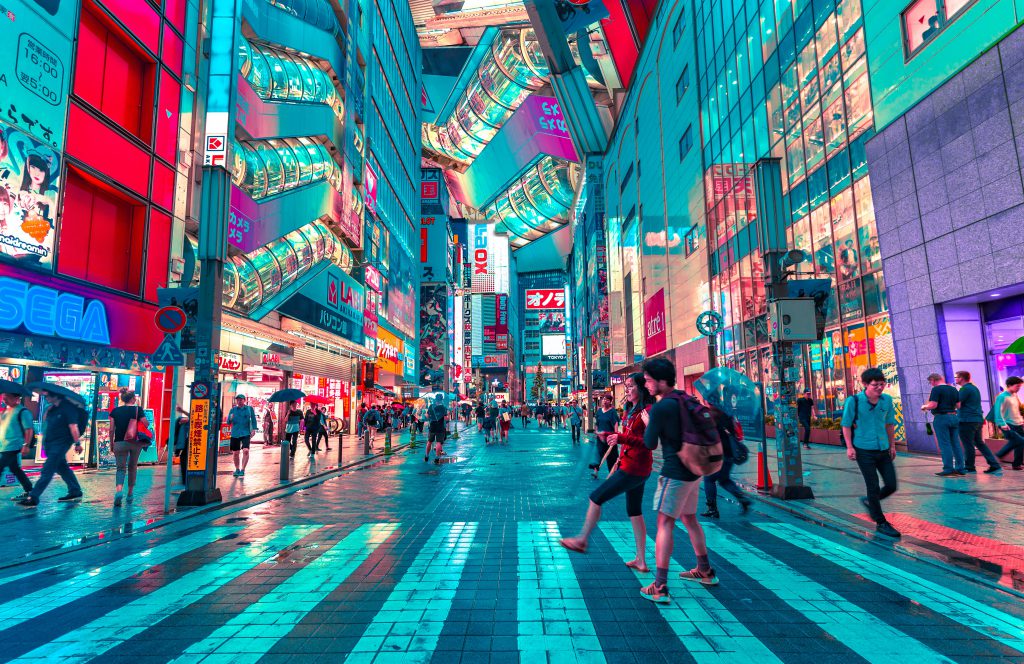
For many Asian tourists, the main reason they visit Japan is for shopping.
They buy a variety of things in Japan, including Japanese-made cosmetics, medicines, health products, snacks, electrical appliances, fashion items, etc. Westerners tend not to buy many things, as there are many countries where buying souvenirs is not a culture, but many of them seem to be interested in things that give them a Japanese feel, such as antiques, old kimonos, obi, and traditional crafts.
Japan is also a shopping paradise for all kinds of otaku and maniacs, with gothic lolita fashion, cosplay, figurines, character goods like Pokemon and Hello Kitty, old game consoles, old records, and more.
8. Shrines, Temples and Japanese Gardens
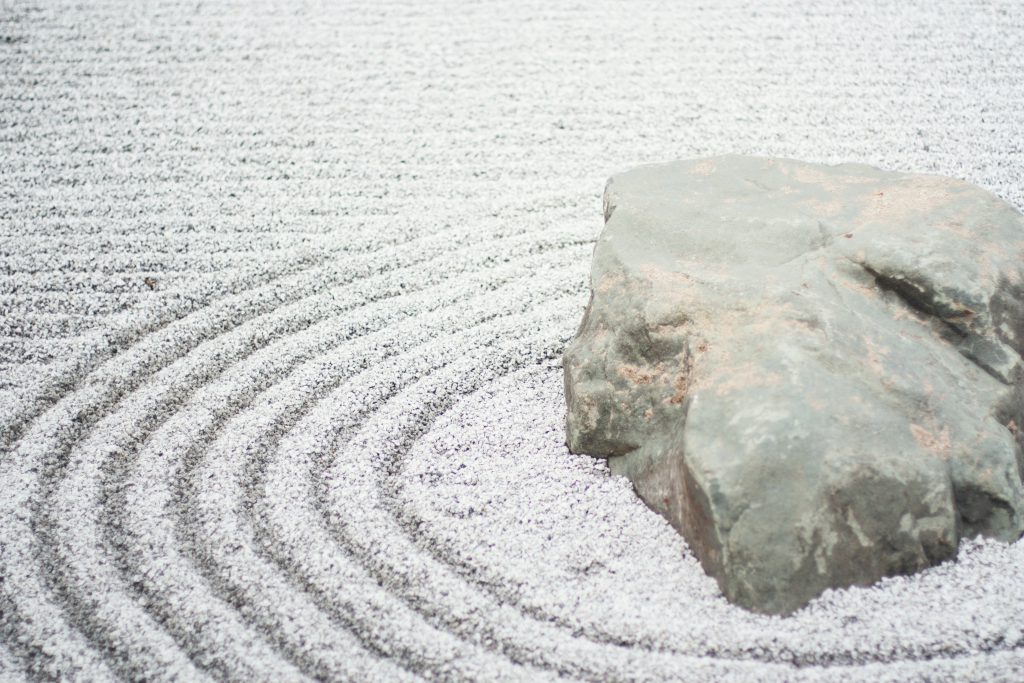
There are many foreign tourists who visit famous shrines and temples overseas, such as Fushimi Inari Taisha Shrine and Kinkakuji Temple in Kyoto, Todaiji Temple in Nara, Nikko Toshogu Shrine, and Sensoji Temple and Meiji Shrine in Tokyo.
In addition to sightseeing, more and more people are becoming interested in experiences such as meditation, zazen, and copying sutras. Zen temple gardens such as Saihoji and Ryoanji, which are imbued with the uniquely Japanese aesthetic sense and sensibility of “wabi-sabi,” are one of the places that foreigners are paying attention to.
Popular spots for foreign tourists include the Adachi Museum of Art in Shimane, Katsura Imperial Villa in Kyoto, Higashi Gyoen, Rikugien, and Hama Rikyu Gardens in Tokyo. Many people seem to find solace in the beauty of Japanese gardens that express the tranquil and sacred atmosphere of shrines and temples, and the natural beauty of nature.
9. Hot Springs & Public Baths
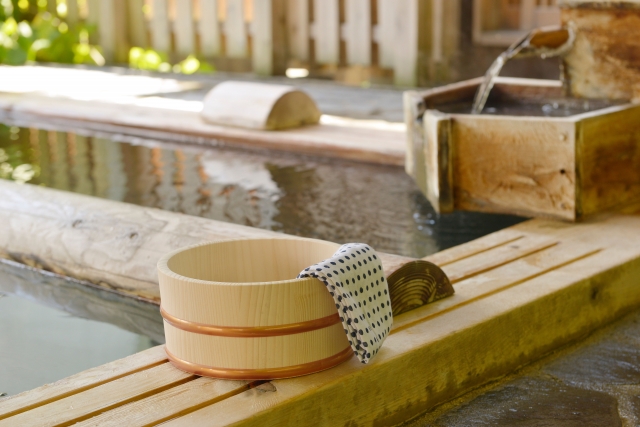
There still seem to be many foreigners who are not used to being naked with other people and feel embarrassed about it, but in recent years the number of foreign tourists who are keen to experience hot springs has been increasing.
And once you experience this paradise, you’re completely hooked. In addition to nationally famous hot spring areas such as Hakone, Kusatsu Onsen, and Beppu Onsen, the popularity of quaint “hot spring towns” such as Kinosaki Onsen in Hyogo Prefecture is also increasing. Public baths, where you can experience good old Japanese popular culture, such as enjoying a large mural of Mt. Fuji and interacting with the storekeeper and local people, are also attracting attention.
10. Unique Japanese Accommodations
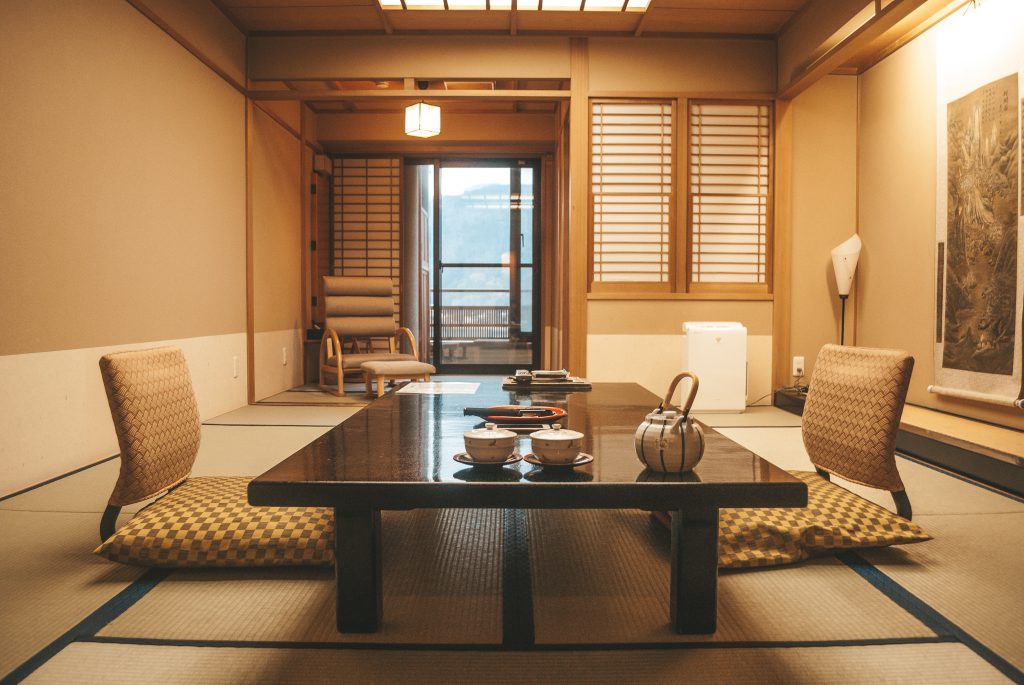
Many foreign tourists would like to stay at a Japanese inn, where they can experience all aspects of Japanese culture, including tatami rooms, futons, hot springs, yukata robes, and delicious Japanese food.
As “Zen” is booming overseas, lodgings at temples such as Mount Koya and Eiheiji where people can practice Zen are also popular. In addition, capsule hotels, “strange hotels” where robots serve guests, love hotels, and other unique accommodations that seem unusual to foreigners and exist almost only in Japan pique the curiosity of tourists seeking something original.
11. Japanese traditional culture, performing arts and crafts
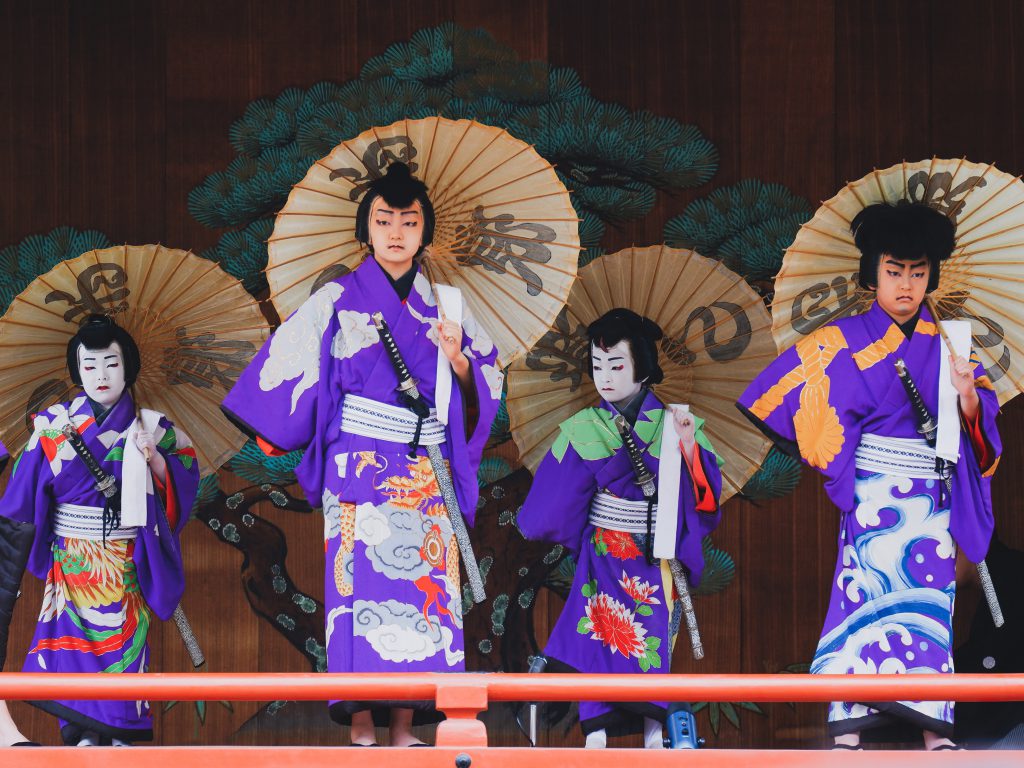
For foreign tourists, seeing and experiencing the various traditional cultures in Japan is one of the great pleasures of traveling.
There are many fans of ukiyo-e, kabuki, bonsai, and other arts overseas, and walking around town in a kimono or yukata is very popular. Many foreigners also visit the “THE Japanese” experience spots all over Japan, from tea ceremony, calligraphy, origami, Japanese drums, and indigo dyeing to sword fighting and ninja experiences.
Japan’s traditional crafts, such as textiles, dyed fabrics, lacquerware, ceramics, cutlery, and woodwork, are also highly regarded overseas for their high quality, functionality, and beauty, and many foreign tourists seeking the real thing visit the places where these crafts are made.
12. Festivals & Seasonal Events
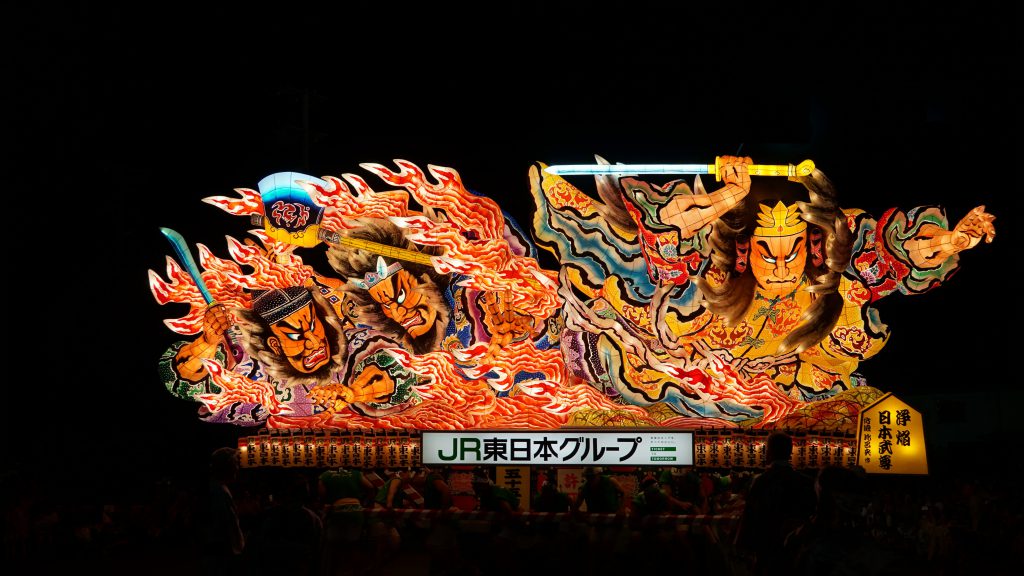
In recent years, Japanese festivals such as the Gion Festival in Kyoto, the Nebuta Festival in Aomori, the Snow Festival in Hokkaido, and the Awa Odori Dance in Tokushima and Koenji have become popular overseas, attracting many foreign tourists. In addition, festivals such as the Danjiri Festival in Osaka and the Onbashira Festival in Nagano are known overseas as dangerous festivals.
Another attraction of Japan is that there are various events throughout the four seasons. The hot and humid summer in Japan is a low season for inbound tourists, but in recent years, summer festivals, Bon Odori dances, and fireworks displays have become increasingly popular, and many people dream of dressing up in yukata and attending these events. There is also an increase in the number of people who join in with the Japanese people and enjoy events such as carrying mikoshi and Bon Odori dances.
13. Outdoor sports and thrilling experiences

The powder snow in Hokkaido and Nagano is famous overseas, and many foreigners visit Japan in the winter to enjoy skiing and snowboarding. Another attraction is the hot springs near the ski resorts.
Cycling along the Shimanami Kaido, Kyoto, and the beautiful countryside, as well as running around the Imperial Palace, are popular among tourists from Europe and the United States. Another popular point is that it is easy to access by train or bus from big cities such as Tokyo, Osaka, and Nagoya to places where you can enjoy outdoor sports and activities while taking in the beautiful scenery, such as mountain climbing, hiking, and rafting.
Fuji-Q Highland, where you can enjoy the spectacular view of Mt. Fuji and thrilling rides at the same time, is a very popular spot for foreign tourists. Although it is not common, Ebisu Circuit in Fukushima is like a holy place for passionate drifting enthusiasts from overseas, and many people from all over the world gather there to enjoy drifting.
14. Sumo and watching sports
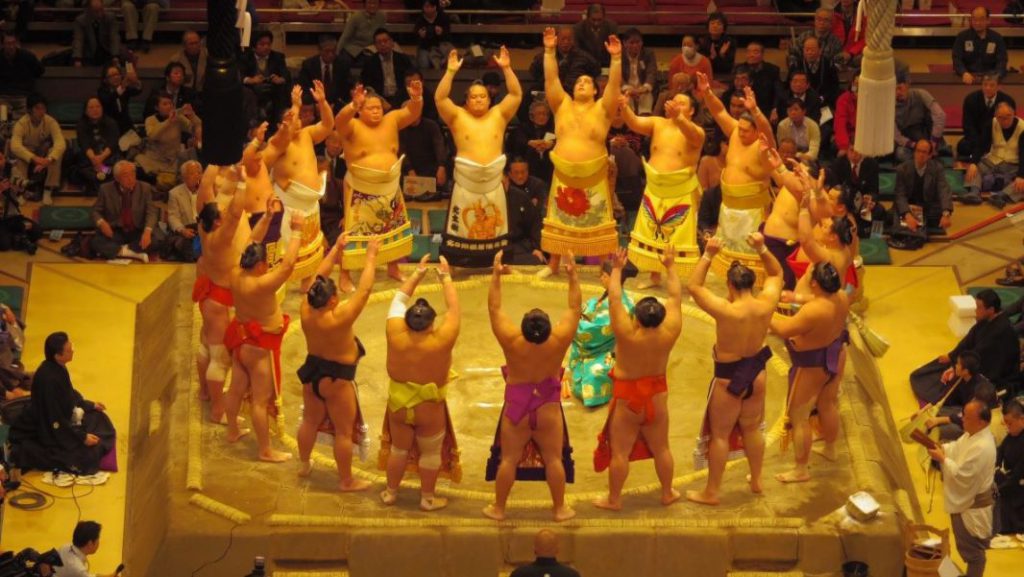
Sumo is very popular overseas, and the Ryogoku Kokugikan is crowded with many foreigners during the Tokyo Grand Sumo Tournament in January, May, and September. The Rugby World Cup is still fresh in our memory, and many people from overseas also visit when international sporting events are held.
Recently, it seems that watching professional baseball and J-League games has become popular among foreigners. One reason is that famous players from overseas play, but they also seem to be interested in the wide variety of gourmet food available at the stadiums and the atmosphere of Japanese people enjoying themselves while watching the games, singing the team’s cheers, and eating and drinking.
The joy of sports is universal.
15. Anime, Manga & Pilgrimages

Japanese subculture such as anime, manga, and games are very popular all over the world, and many people, especially those under the age of 40, became interested in Japanese culture, customs, food, and the language because of Japanese anime and manga.
Among anime films, Studio Ghibli’s works are overwhelmingly popular overseas, and the Ghibli Museum in Mitaka is one of the most popular spots for foreign tourists.
In recent years, visiting the settings and filming locations of anime and manga has come to be called “pilgrimages,” and many foreigners are visiting sacred sites all over Japan. In addition to the various sacred sites of Ghibli films such as Yakushima, the Enoshima Electric Railway’s “Kamakurakokomae Station” from “Slam Dunk” seems to be particularly popular with Chinese tourists. Recently, many foreigners have been visiting Hida Furukawa in Gifu Prefecture, a sacred site for “Your Name.”
16. Theme parks, entertainment spots, and cafes
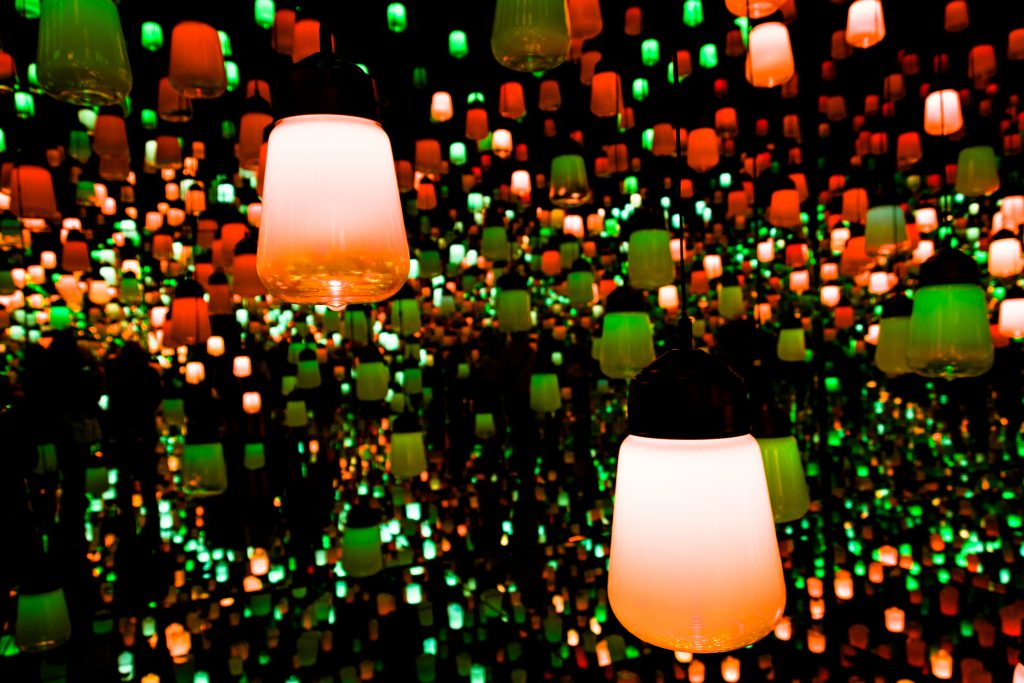
Universal Studios Japan and Tokyo Disney Resort are extremely popular with foreigners, attracting many tourists from overseas. Fuji-Q Highland, Sanrio Puroland, and Nikko Edomura are also very popular with foreign tourists.
There are also countless karaoke places and game centers, as well as elaborate aquariums, zoos, amusement parks, ninja houses, etc. There are many original entertainment spots all over Japan, especially in Tokyo, which seem to attract foreign tourists looking for exciting and interesting experiences.
Odaiba, home to many entertainment facilities such as Mega Web, TeamLab Borderless, the life-sized Gundam, and Oedo Onsen Monogatari, is a popular area for foreign tourists. Many foreign tourists are also interested in unique concept cafes, such as various types of animal cafes, maid cafes, and Gundam cafes.
17. World Heritage Sites and Places with a Historical Feel
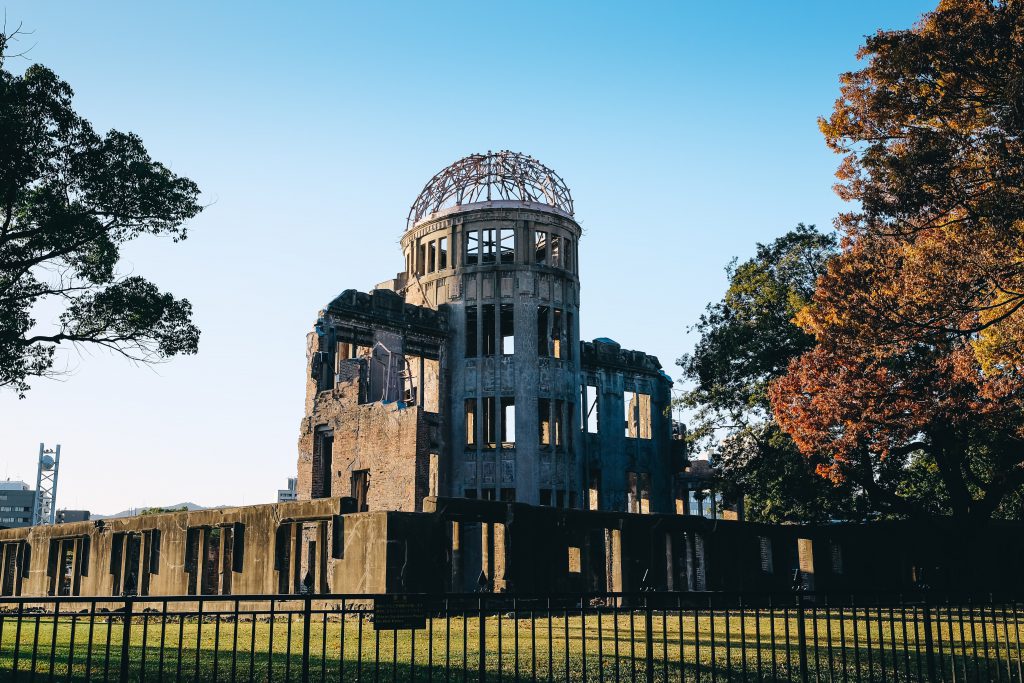
There are currently 23 World Heritage Sites in Japan, of which the most popular with foreign tourists are the ancient capital of Kyoto, the Atomic Bomb Dome in Hiroshima, and Itsukushima Shrine.
Many foreign tourists visit not only Mount Fuji, but also Shirakawa-go, Nikko Toshogu Shrine, Todaiji Temple, and Horyuji Temple, and many seem to be interested in the Hashima Coal Mine, also known as Gunkanjima.
Kyoto is immensely popular not only for its cultural assets registered as World Heritage Sites, but also for the way in which Japan’s long history spanning more than 1,200 years can be felt everywhere.
Many foreigners admire samurai, and Japanese castles, where you can experience the era and worldview of the samurai, are also popular. Many people visit castles such as Himeji Castle, a World Heritage Site, Matsumoto Castle, Iyo Matsuyama Castle, Kumamoto Castle, and Osaka Castle.
Also not to be forgotten are popular spots such as Hida Takayama, Tsumago-juku, Magome-juku, and Ouchi-juku, with their post towns and old streetscapes that feel like you’ve traveled back in time to the Edo period.
18. City Walking, Architecture Walking
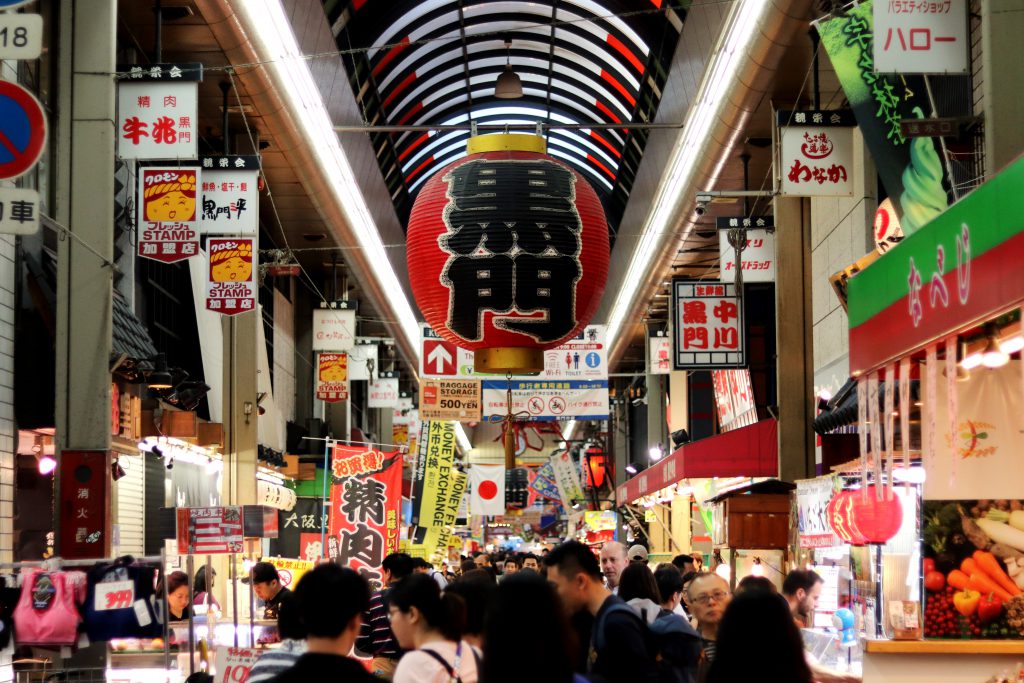
Many people describe Japanese cityscapes as “like something from an anime world” or “the whole town looks like a theme park.”
Many foreign tourists visit Shibuya’s Scramble Crossing, the “Kawaii” Takeshita Street, bustling areas such as Kabukicho and Dotonbori with their dazzling neon lights, lively markets such as Tsukiji Outer Market, Nishiki Market, and Kuromon Market, old-fashioned shopping streets such as Ameyoko, Kappabashi, and Yanaka Ginza, retro drinking districts with strong vestiges of the Showa era such as Yurakucho Underpass, Omoide Yokocho, and Golden Gai, Akihabara and Nakano Broadway, which are said to be meccas for otaku, Ikebukuro Otome Road, Osaka’s Nipponbashi, Shimokitazawa and Koenji, which are famous for their second-hand clothes, etc.
There are also many fans of uniquely Japanese architecture, from traditional to modern, and walking tours that take in the buildings designed by world-famous architects dotted around Ginza, Omotesando and other areas are also popular.
19.Railroad & Transportation Network
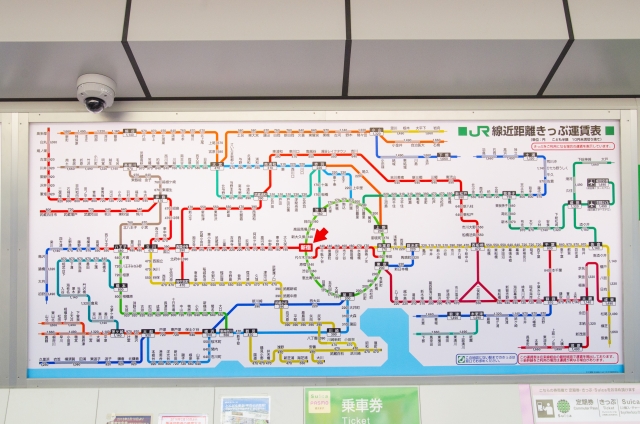
Japan’s railways are renowned around the world for their high level of technology, punctuality, comfort, and convenience, and many foreign tourists visit Japan looking to ride trains, especially the Shinkansen and tourist trains.
Thanks to the JR Pass, which is a dream come true for Japanese people, it is also attractive that you can travel to various tourist spots scattered all over Japan, from Hokkaido to Kyushu, at an extremely low cost.
Many foreign tourists are surprised by the sheer number of train lines within and around Tokyo, and are confused until they get used to the complexity of large stations such as Shinjuku Station and Tokyo Station, and systems such as IC cards. However, once they get used to it, they are impressed by the easy-to-understand color-coded signs throughout the stations, the fact that trains depart and arrive on time despite the huge number of trains, and how well and convenient the network of JR, subways, and private railways is.
20. We Japanese
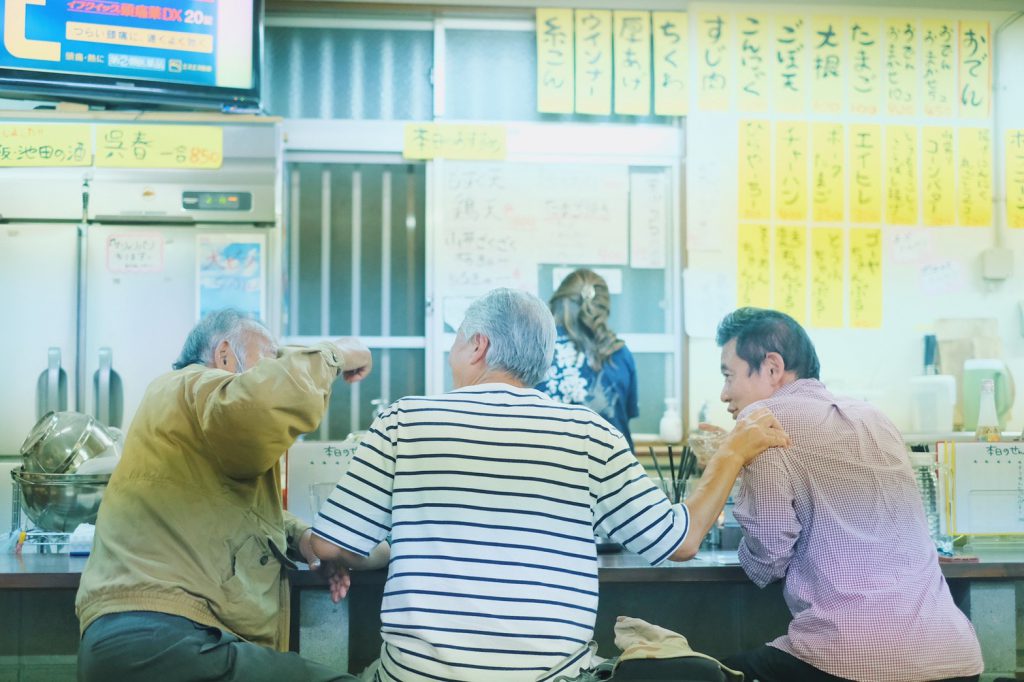
The last one on my list is “Japanese people.”
From a global perspective, Japanese people seem to be a very unique race. They are often perceived negatively, such as not being able to speak English, not being assertive, being punctual, being hard workers, etc. However, recently, images of Japanese people picking up trash all over the world, Japanese supporters praising the opposing team regardless of whether they won or lost at the World Cup, their calm and united behavior after the earthquake disaster, etc. have become known overseas through news and SNS, and there are more and more instances where the high level of Japanese people’s culture, such as their sincerity and consideration for others, is praised.
Because of this information, many foreigners visit Japan with a positive attitude toward Japanese people. Also, when they actually come to Japan, they are impressed by the fact that wherever they go, Japanese people smile and are kind, when they get lost and Japanese people take them to their destination even though they don’t understand English, when they lose something and Japanese people run to bring it back to them, and so on. These actions that are considered normal for Japanese people are not normal at all around the world.
There is a sense of virtue in the Japanese people in that they value humility and underestimating others, and many people tend to focus only on Japan’s shortcomings, but there are also many people around the world who are interested in Japan and Japanese people and would like to visit Japan.
lastly
Dreaman,co,ltd. provides various support for foreign travelers.
We can assist with pre-departure reservations, trouble-shooting on the day of reservations, various navigation assistance, ticket arrangements, luggage shipping, insurance arrangements, product purchases, and even after you return home. Please feel free to ask any questions or consult with us.


コメント